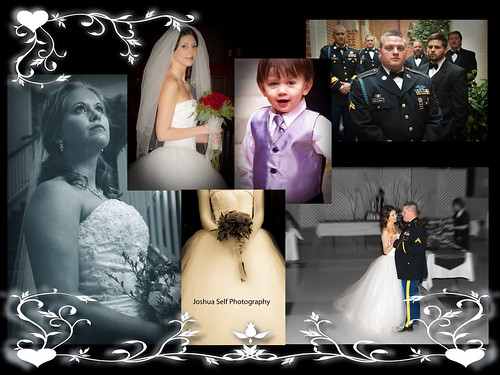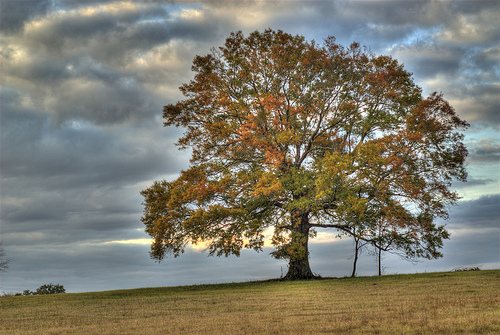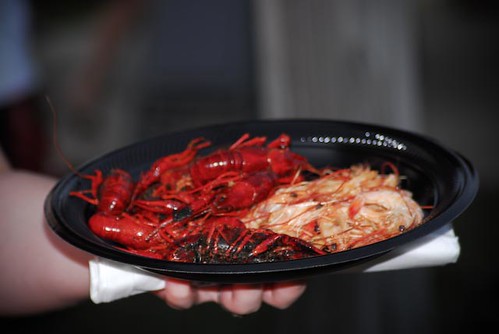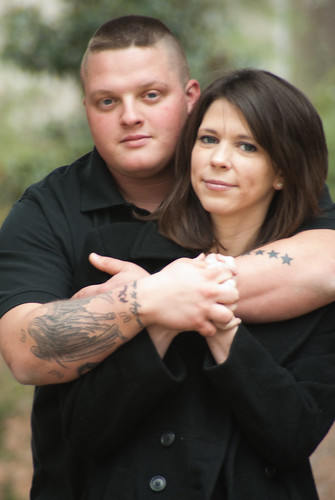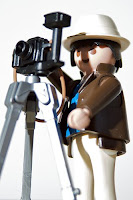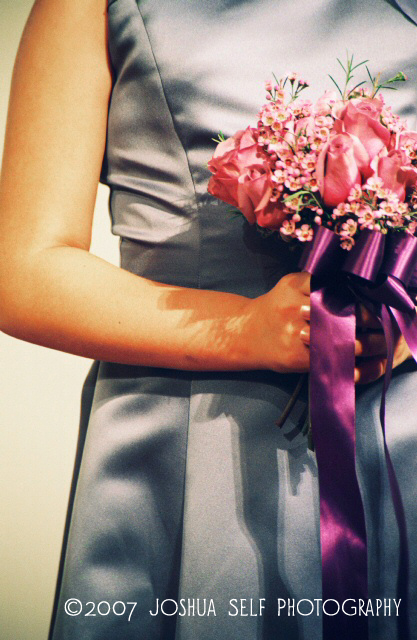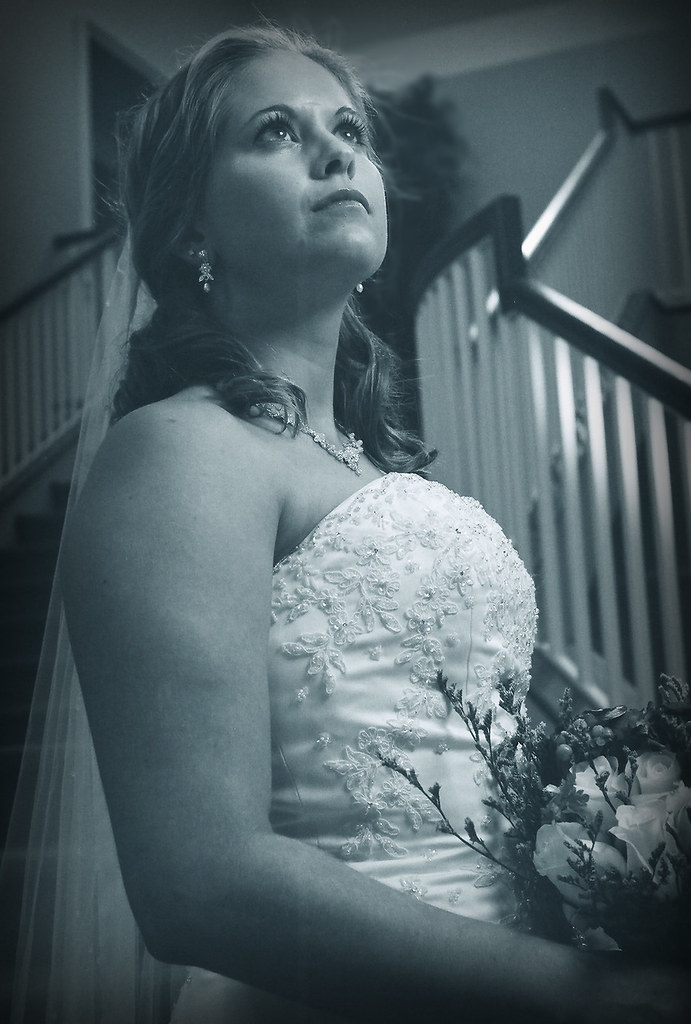
What are some things that your subjects have done or worn that have made you cringe?
Yesterday I had the chance to have the tables turned on me as I posed with my beautiful fiance for our new engagement photos that our photographer Shannon (of
Shannon Ludlum Photography) shot. She had some great ideas and I'm sure that they will come out great, but I was having a hard time making myself not think about framing and focus and location details, but she did a great job of putting us at ease and having fun so she could get some great photos for us.
As a portrait and wedding photographer you WILL run into bad colors / clothing or just general ignorance on the part of your client, so I'm going to help you prepare for how to deal with unruly clothing or behavior from your subject and if you are ever the subject you can more easily show or tell your subjects how to BEHAVE . First I'll give you what you should do as a photographer and then what to expect if you are the subject.
The behavior isn't on purpose
... so don't blame the subject. If anything, blame yourself for not telling your client about these rules before hand. Most wedding couples or solo portraits have not had much camera face time if any at all, so be prepared to give detailed instructions or have a good "beside manner" (as if you were a doctor) and keep your subjects smiling, laughing and in a good mood in general.
If you are the subject: remember that you are not expected to read the photographer's mind or be a professional model, just take direction and don't be stubborn. Your photographer knows how to make you look good and is putting you and posing you in the best way to make sure you stay that way.
Put your subject at easeThis is a tricky technique and is easier for some photographers than others. Basically you chit chat with them and develop a rapport with them. Make jokes (have some jokes pre-planned) get them to be playful with each other. This includes tickles and neck kisses ;-)
If you are the subject: don't be nervous. Be yourself and just have fun. Breathe. Stop worrying how the pictures will come out and let your photographer do their job.
What not to wearYou may have seen a book or TV show about this. As a photographer you know that there are certain colors and styles of clothing that look horrible in photographs. Be sure to let your clients know ahead of time "what not to wear" to their photo shoot. Don't assume that they've read up on it. So here are some colors that are
not so great on film:
- Bright Red (or any red) - red bleeds on film. Digital sensors handle it a little better but its usually too much contrast for the human eye and your eye bleeds the color in your brain. STAY AWAY!
- Bright or fluorescent yellows, lime greens, etc. - The 80's called... they want their clothes back
- Pure White - white is a great contrasting color but most digital meters have a hard time reading the correct exposure and thus under or over exposes the white making it blow out and losing the detail of any folds or patterns in the material. Tell your clients to stay away from pure white unless you plan on doing some time consuming hand metering every other shot.
- Large stripes, bold designs, polka dots - while not a problem for sensors, stripes and polka dots either make people look fatter than normal or skinnier than normal. It is also distracting to the viewer, where you want the focus to be on the face of your subject, not the beer gut.
- Funny print shirts - or any interesting artistic designs. Tell them leave their hilarious Borat t-shirt at home. Because that's all that a viewer will notice and laugh at when looking at the picture
- Trendy / Hot /Goofy designs - tell your clients to keep it more traditional and subdued. Not that they shouldn't wear something striking or vibrant, but they need wear something that won't distract from their faces and eyes.
- Short sleeves / tank tops / shorts - if you're not a professional model with a perfect body, stay with pants/jeans and slightly loose fitting short or long sleeve shirts/tops. Lots of skin flopping around isn't attractive.
Basically some great colors would be:
- medium to dark greens
- purples
- khaki
- blues
- browns
- black
- creme whites
I'm not going to pretend to know everything about women's fashion (maybe some of the ladies could share some good options for clothing in the comments section?) but I'll give some advice for guy's clothing.
- Blue Jeans: good fitting but not too loose or too tight (no skinny jeans)
- Black button down shirts, long sleeve
- Nice plain polo (no logos) in the above colors (if you have decent looking arms)
- Casual but modern suit coat (not buttoned)
DO NOT wear:
- "Urban Wear" - sagging, big print shirts, poorly made clothes
- Camouflage - if you are a real soldier, wear your dress uniform for pics.
- weird ties - bolos, Sponge Bob, Tabasco
- popped collar polos or layered polos - save that for the frat party
The final details that most people don't think about till the last minute are:
- Hair - bring some hair gel or hairspray and a comb or brush with you to the shoot.
- Makeup - obviously for the ladies but some concealer (for blemishes or zits) or translucent powder will do wonders for the guys as well. The powder keeps the shine off your face and forehead. (just ask your wife/girlfriend to borrow some). Its done in Hollywood and on TV all the time guys, don't get too weird about this.
So, remind (or even print out this handy list for) your clients before their photo shoot and you'll have a great time and everyone will look hot!
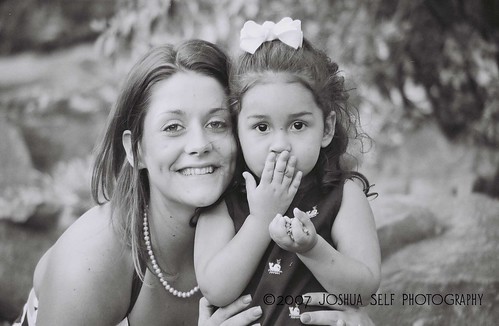

.jpg)

